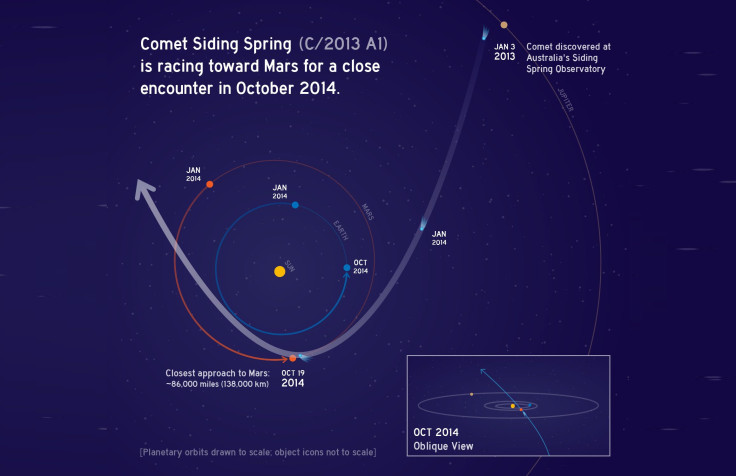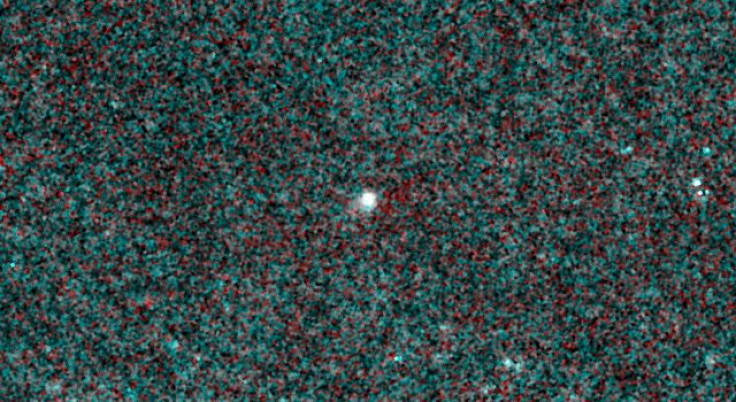Comet Watch On Mars: NASA Prepares For Likely Encounter With Comet Siding Spring In October On The Red Planet

A comet named C/2013 A1 Siding Spring is expected to put on a “barnstorming show” on Mars in October, NASA announced on Tuesday, adding that the space agency is preparing to witness the comet’s encounter with the red planet.
According to NASA, on Oct. 19, Siding Spring will pass by Mars at a distance that is 10 times closer to the planet's surface than any identified comet has ever flown past Earth. And, scientists believe that a spacecraft on Mars might get a good look at the nucleus of the comet as it heads toward the closest approach, approximately 86,000 miles from the planet.
“We could learn about the nucleus -- its shape, its rotation, whether some areas on its surface are darker than others,” Rich Zurek, chief scientist at NASA's Mars Exploration Program, said in a statement.
The scientists also said that dust particles that the comet’s nucleus will shed this spring could threaten spacecraft orbiting Mars in October. Although the level of risk will not be known for months, NASA said that it is already evaluating possible precautionary measures as it prepares to study the comet.

“Our plans for using spacecraft at Mars to observe comet Siding Spring will be coordinated with plans for how the orbiters will duck and cover, if we need to do that,” Zurek said.
NASA said it will observe Siding Spring using a range of resources that are based on Earth and Mars, as well as those orbiting the two planets. NASA's Hubble Space Telescope and the NEOWISE mission have observed the comet this month both to characterize this first-time visitor from the Oort cloud -- a hypothetical spherical cloud of icy objects nearly a light-year away from the Sun -- and to study the size of dust particles and the amount of dust produced by the comet for a better understanding of the potential risks the comet poses to the Mars orbiters.
According to the scientists, the degree to which Siding Spring brightens this spring will be an indicator of how much of a hazard it will present to spacecraft orbiting Mars.
“How active will Siding Spring be in April and May? We'll be watching that,” Soren Madsen, chief engineer for the Mars Exploration Program, said in a statement. “But if the red alarm starts sounding in May, it would be too late to start planning how to respond.”
NASA said that two key strategies to reduce risk to the orbiters include getting them behind Mars during the minutes of highest risk, and to orient the orbiters so that their most vulnerable parts are not in the line of fire.
Siding Spring is orbiting the sun in almost the opposite direction as Mars and the other planets. Its nucleus and the dust particles it sheds will be traveling at the speed of about 35 miles a second, relative to the Mars orbiters -- about 50 times faster than a bullet from a high-powered rifle.
When it was discovered on Jan. 3, 2013 from Australia's Siding Spring Observatory, the comet was farther from the sun than Jupiter is. However, subsequent observations enabled scientists to calculate the trajectory the comet will follow as it swings past Mars.
While further observations in 2014 will continue to refine knowledge of the comet's path, scientists expect that Siding Spring's nucleus could come about as close to Mars as one-third of the distance between Earth and the moon.
© Copyright IBTimes 2024. All rights reserved.












